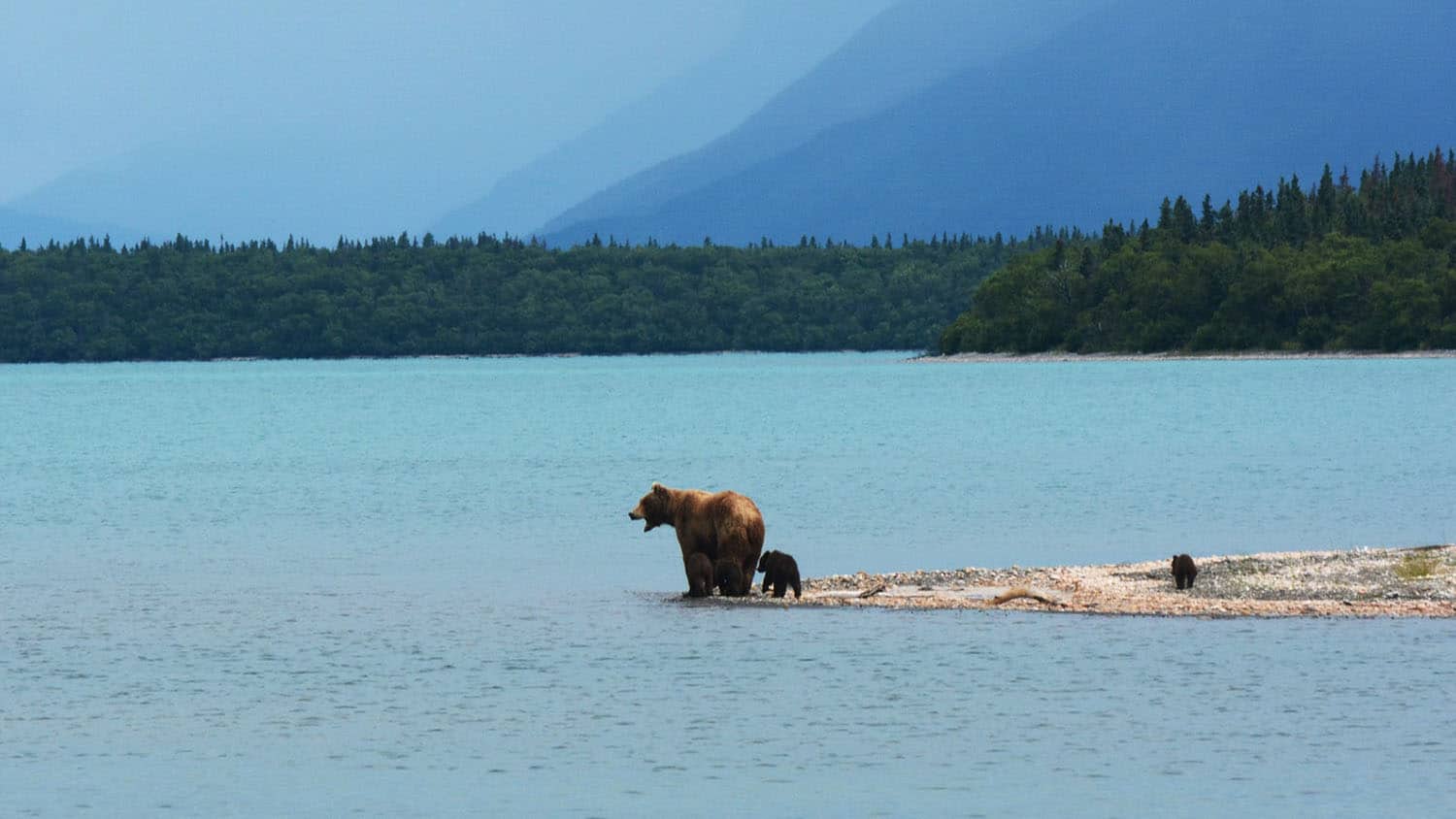What Shapes Gut Microbiomes of Alaska’s Brown Bears? Location, Location, Location

For Immediate Release
A recent study of Alaskan brown bears (Ursus arctos) finds that there is significant variation in the gut microbiome of bear populations, depending on where the bears live. The finding advances our understanding of the relationship between wildlife habitat, diet and gut microbiome diversity.
“The gut microbiome is the ecosystem of microbial life that populates an animal’s digestive system – and this microbiome plays a major role in an animal’s well-being,” says Erin McKenney, co-author of a paper on the work and an assistant professor of applied ecology at North Carolina State University. “Everything we learn about these microbiomes helps us make more informed decisions to support the health of wildlife species.”
“The Alaska wilderness, important habitat for brown bears, is changing,” says Grant Hilderbrand, co-author of the study and associate regional director for resources for the National Park Service in Alaska. “The gut microbiome serves as a new diagnostic tool for understanding the health of wildlife populations. It can also help us predict how animal health will change as the environment changes. The study we’ve done here lays the foundation for advancing our understanding of gut microbiomes in Alaska’s iconic brown bears.”
The researchers launched the project with the goal of characterizing what the gut microbiome of Alaskan brown bears looks like.
“Bears are particularly interesting in this context, because they’re omnivores,” says Diana Lafferty, co-author of the paper and an assistant professor of biology at Northern Michigan University. “Bears function as predators and as scavengers, and they have a relatively simple gut system – which means their microbiome may play a particularly important role in helping them extract nutrients from their diet. With this project, we wanted to establish a baseline of what ‘healthy’ microbiomes look like for these animals, which are relatively undisturbed.”
The researchers also benefited from piggybacking on other research efforts that were already underway. The National Park Service was already engaged in research projects that involved tracking and observing wild brown bears at three national parks and preserves: Katmai; Lake Clark; and Gates of the Arctic.
“By collaborating with ongoing projects, we were able to collect all of the data and samples at no additional cost,” Hilderbrand says.
For this study, the researchers analyzed 66 fecal samples from 51 brown bears that were sampled during previous research operations. Because these samples were collected as part of ongoing research initiatives, the researchers also had data on each bear’s age, sex, size and body condition.
The researchers extracted microbial DNA from the fecal samples, and assessed those results to determine what kinds of microbes were in each sample.
“We found significant differences in the diversity of the bears’ microbiomes at each of the three parks,” says Sarah Trujillo, corresponding author of the paper who worked on the study while a graduate student at NMU. “Katmai had the most diversity, and also had the most diverse array of food sources available. Gates of the Arctic, which had the most limited array of food resources, also had bears with the least diverse gut microbiomes. In other words, we found what we expected: the more diverse the diet, the more diverse the gut microbiome.
“However, while we found clear distinctions in microbiome diversity at each park, those differences could not be fully explained by diet alone. There appears to be something else at play that we don’t fully understand yet. That’s an area for future research.”
The paper, “Intrinsic and Extrinsic Factors Influence on an Omnivore’s Gut Microbiome,” is published in the journal PLOS ONE. Study co-authors include Kyle Joly and Buck Mangipane of the National Park Service; Lindsey Mangipane, David Gustine and Joy Erlenbach of the U.S. Fish and Wildlife Service; and Matthew Rogers, of the National Marine Fisheries Service.
The work was done with support from Northern Michigan University and the National Park Service.
-shipman-
Note to Editors: The study abstract follows.
“Intrinsic and Extrinsic Factors Influence on an Omnivore’s Gut Microbiome”
Authors: Sarah M. Trujillo and Diana J. R. Lafferty, Northern Michigan University; Erin A. McKenney, North Carolina State University; Grant V. Hilderbrand, Kyle Joly, and Buck A. Mangipane, National Park Service; Lindsey S. Mangipane, David D. Gustine and Joy A. Erlenbach, U.S. Fish and Wildlife Service; and Matthew C. Rogers, National Marine Fisheries Service
Published: April 8, PLOS ONE
DOI: 10.1371/journal.pone.0266698
Abstract: Gut microbiomes (GMBs), complex communities of microorganisms inhabiting the gastrointestinal tracts of their hosts, perform countless micro-ecosystem services such as facilitating energy uptake and modulating immune responses. While scientists increasingly recognize the role GMBs play in host health, the role of GMBs in wildlife ecology and conservation has yet to be realized fully. Here, we use brown bears (Ursus arctos) as an ecological model to (1) characterize GMB community composition associated with location, season, and reproductive condition of a large omnivore; (2) investigate how both extrinsic and intrinsic factors influence GMB community membership and structure; and (3) quantify differences in GMB communities among different locations, seasons, sex, and reproductive conditions. To achieve these aims, we subsampled brown bear fecal samples collected during United States National Park Service research activities at three National Parks and Preserves (Katmai, Lake Clark, and Gates of the Arctic) and extracted microbial DNA for 16S rRNA amplicon sequencing and microbial taxonomic classification. We analyzed GMB communities using alpha and beta diversity indices, subsequently using linear mixed models to examine relationships between alpha diversity and extrinsic and intrinsic factors. Katmai brown bears hosted the greatest alpha diversity, whereas Gates brown bears hosted the least alpha diversity. Our results indicate that location and diet drive GMB variation, with bears hosting less phylogenetic diversity as park distance inland increases. Monitoring brown bear GMBs could enable managers to quickly detect and assess the impact of environmental perturbations on brown bear health. By integrating macro and micro-ecological perspectives we aim to inform local and landscape-level management decisions to promote long-term brown bear conservation and management.


